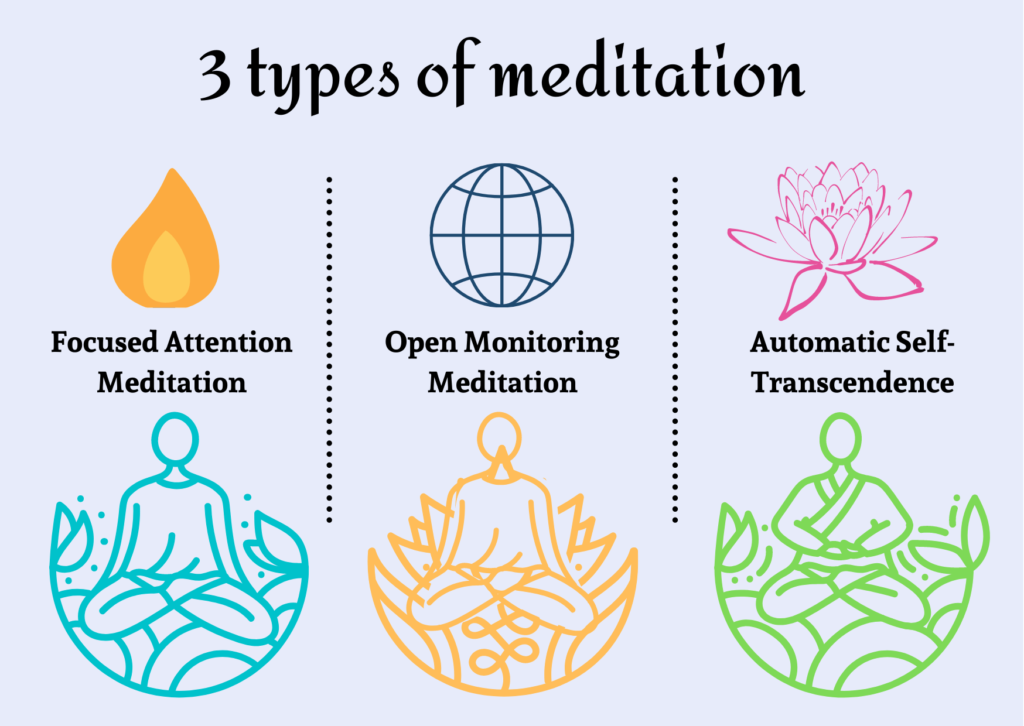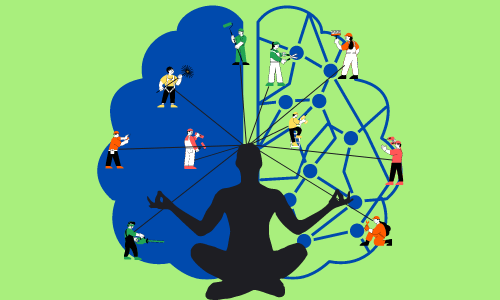In the fast pace of life where there is constant bombardment of information surrounding all of us, there might be very few instances when we disengage from day to day things. An average human mind has more than 6,000 thoughts per day and many of these thoughts are repetitive with unintentional judgements about different things or people; we usually have more negative thoughts than positive ones.
Meditation is a practice which involves turning on the attention or awareness to dwell upon a single object, sound or experience. It can be performed by individuals of any age group and is not solely confined to the monks or spiritual and religious people. The goal of meditation is not to have a tranquil mind; instead the concept of meditation is to slow down the brain’s thought process which in turn aids in overall relaxation. When an individual is just beginning to practice meditation it is common to notice that the mind wanders onto trivial thoughts but by constantly focusing the attention on the meditative object, one can train their brain to be aware of the present moment.
There are many different forms of meditation and their existence dates back to several centuries worldwide. Meditation falls under 3 categories: focused attention meditation (FAM), open monitoring meditation (OMM) and automatic self-transcending.

FAM is based on the practice of voluntarily focusing attention on a chosen object in a sustained fashion, for example, focusing attention on our own breath or thoughts, whereas OMM involves non-reactively observing the content of experience from moment to moment wherein the individual is open to perceive and observe any sensation or thought without focusing on a particular object. In automatic self-transcending meditation there is repetition of a word or sound which helps in gently bringing the attention back to the present moment.
During various studies conducted by neuroscientists, it was noted that meditation leads to deactivation of a brain area called the PCC (posterior cingulate cortex) in experienced rather than beginner meditators. This is consistent with the fact that PCC together with the MPFC (medial prefrontal cortex) is a core structure of the default mode network (DMN) which is believed to reflect self-referential thought processes and daydreaming in the absence of explicit goal-directed tasks. Thus, the lesser activation observed in these two crucial DMN regions in experienced meditators (relative to beginners) helps in acceptance of sensations, emotions, and thoughts rather than attempting to control or change them.
Individuals who suffer from anxiety are frequently agonized by repetitive negative thoughts, which can distract from the tasks at hand and affect their mood and productivity. Amygdala is a structure in the brain which is responsible for regulating the emotions, memories associated with fear and is well known for the fight or flight response. A study conducted to evaluate emotional reactivity was associated with lower amygdala activation in participants who engaged in mindfulness meditation compared to controls indicating reduction in stress and helping early recovery from stressful situations in both highly experienced meditators and individuals having practiced mindfulness meditation for a short period of time.
Mindfulness meditation (MM) helps in paying attention to thoughts and emotions as they unfold naturally by allowing them to pass without trying to avoid discomfort or grasp onto pleasant experiences. By concentrating non-reactively, MM helps to obliviate previous unpleasant synaptic connections (extinction and reconsolidation) and thereby liberates from being bound to habitual emotional reactions.
The human brain has a unique ability to reorganize itself by forming new neural connections in response to internal and external input, which is termed as neuroplasticity, occurs throughout the lifespan. Meditative training is known to change the plasticity of the brain by rewiring new connections linked to positive thoughts and emotions, empathy and helps to release negative emotions like fear and stress. It also helps to reorganize the gray matter.
The gray matter forms the cortex of the brain and consists of neuronal cell bodies and their dendrites, which allows it to process information and release new information through axon signaling thereby enabling individuals to control movement, memory, and emotions. Meditation also leads to increased gray matter in the brain regions such as the left hippocampus concerned with learning, memory as well as emotional regulation; brainstem indicating psychological well-being and the temporal-parietal junction responsible for perspective taking, empathy and compassion occurs due to increased activation of these regions. Whereas the gray matter in the amygdala was seen to be reduced which correlates with the reduction in stress.
Since many benefits of meditation have been seen in long term meditators on the well-being, it is important to be consistent with daily meditation practice. Even 20 minutes of daily meditation practice has shown a plethora of benefits. Hence an individual just needs to prioritize 20 minutes from their busy schedule to reap the advantages from meditation.
References:
- How Does Mindfulness Meditation Work? Proposing Mechanisms of Action From a Conceptual and Neural Perspective.
doi:10.1177/1745691611419671 - Impact of short- and long-term mindfulness meditation training on amygdala reactivity to emotional stimuli
https://sci-hub.ru/https://doi.org/10.1016/j.neuroimage.2018.07.013 - Impact of mindfulness on the neural responses to emotional pictures in experienced and beginner meditators.
https://doi.org/10.1016/j.neuroimage.2011.06.001 - Neuroplasticity and Mindfulness Meditation https://scholarworks.wmich.edu/cgi/viewcontent.cgi?article=3477&context=honors_theses
- Mindfulness practice leads to increases in regional brain gray matter density doi: 10.1016/j.pscychresns.2010.08.006
- Change in Brainstem Gray Matter Concentration Following a Mindfulness-Based Intervention is Correlated with Improvement in Psychological Well-Being doi: 10.3389/fnhum.2014.00033
- Influence of Mindfulness Practice on Cortisol and Sleep in Long-Term and Short-Term Meditators doi: 10.1159/000330362
Writer

Chitrika Salian
Chitrika is a graduate in Biotechnology from Khalsa College, Mumbai. Her interest lies in stem cells, cancer cells and Immunology.
Illustrator

Urja Kuber
Co-Founder & Director of Website Development & Logistics at The Science Paradox

